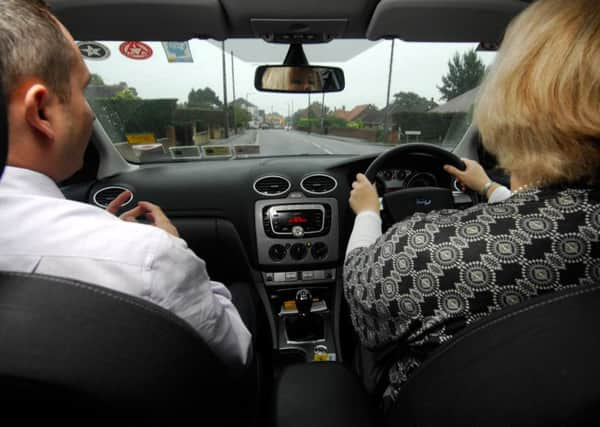80 years of the driving test - your best test moments


Did you drive on the wrong side of the road? Call your instructor ‘mum’? Perhaps you tried to check the oil by opening the boot - get in touch to reveal all.
I’ll get us started - I once had a lesson in another part of the country where the instructor asked me to drive to McDonalds and buy us both coffees to ‘discuss my driving experience so far’ (nil). 35 minutes into a one hour lesson we finally hit the road proper, managed one reverse around a corner - then he charged me for the full hour!
Advertisement
Hide AdAdvertisement
Hide AdIf you have a story you think our readers would like to hear - or if you think you or a relative can lay claim to being our district’s oldest driver - we’d love to hear more about it.
Call 01423707505 email [email protected] or comment on our Facebook page
The test became compulsory on June 1, 1935.
In 1934 there were just 1.5 million cars in use, but over 7,000 people were killed on the country’s roads.
Within a year of the introduction of the test, the number of deaths had fallen by 1,000, and has continued to improve.
Advertisement
Hide AdAdvertisement
Hide AdTransport Minister, Lord Ahmad of Wimbledon, said: “The driving test is a significant rite of passage, giving greater freedom and independence to generations of people across Britain.
“This country has a proud tradition of leading innovation and the driving test is just one example of us continually improving, making our roads some of the safest in the world.”
The driving test still has some of its original elements, such as turning in the road or reversing, but has also seen significant changes. For example from 1975 candidates stopped being tested on hand signals, and in 1996 a separate theory test was introduced, replacing questions asked by the examiner during the practical test. In 2002 a hazard perception element was added to the theory test, using video clips to test candidates’ awareness of hazards on the roads - this has been credited with an 11 per cent reduction in crashes.
Another major change took place in 2010, with the introduction of a 10 minute ‘independent driving’ section to the practical test, requiring candidates to show they can drive safely without turn by turn directions from their examiner. And in January 2015, computer generated imagery (CGI) replaced filmed video clips in the hazard perception test, allowing it to incorporate a wider range of hazards and driving environments.
Advertisement
Hide AdAdvertisement
Hide AdDriver and Vehicle Standards Agency Chief Executive, Alastair Peoples, said: “The driving test has adapted over the years to stay up to date with modern driving, and we continue to keep it under review to ensure it is as relevant and effective as possible.
“We have already made the test more representative of real life driving by requiring candidates to show they can drive safely without constant directions from their examiner.”
Driving test facts
Mr R Beere was the first person to pass the driving test in 1935: he paid the grand total of 7/6d (37.5p) to take the test.
There were no test centres in 1935 so you had to arrange to meet the examiner somewhere like a post office, train station or town hall.
Advertisement
Hide AdAdvertisement
Hide AdThe test was suspended for the duration of World War 2 and didn’t resume until November 1, 1946.
The theory test was introduced in 1996, replacing questions about The Highway Code during the practical test.
Candidates could book their theory test online for the first time in December 2001.
The pass rate in 1935 was 63 per cent, compared to 47 per cent in 2014.
1969 saw the first driving test set for an automatic vehicle.
Since 1935, around 50 million tests have been taken in Great Britain.